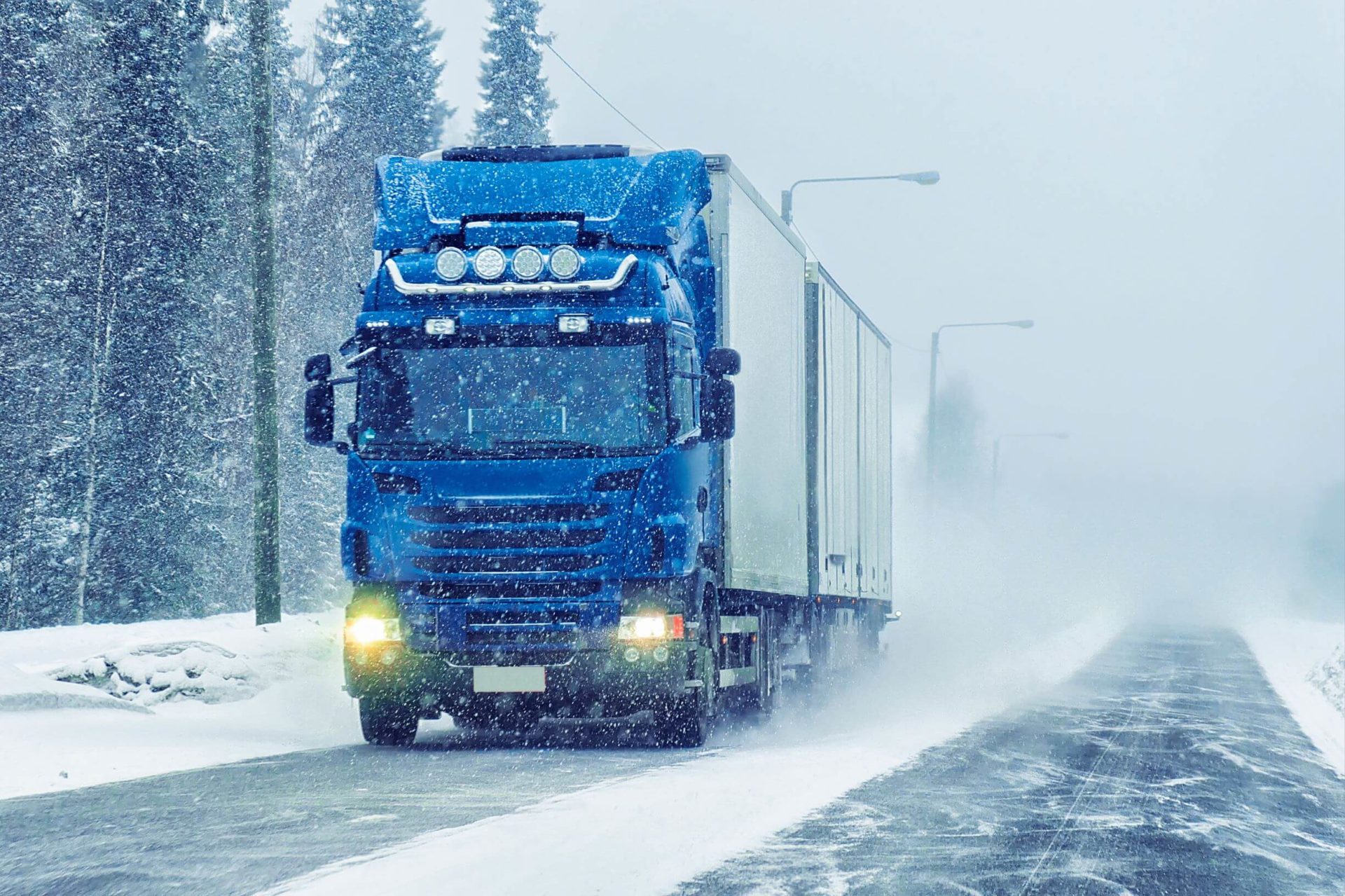According to the Department of Transportation, bad weather causes 21% of vehicle accidents. A DOT study shows that heavy snow can slow freeway traffic down by 5-40%, and even light snow can decrease speeds by as much as 13%, increasing your drivers’ risks of having an accident. Taking steps to prepare your drivers for the increased challenges of winter will help keep your drivers safe and deliveries reaching their destinations on schedule.
So, check out these 7 winter truck driving tips not to overlook.
7 winter truck driving tips
1. Speed limits are designed for ideal conditions
When you’re driving through a wet, wintery mix, you may face the risks of driving over pockets of black ice on bridges or in a full-scale snow storm. In these cases, posted speed limits don’t make sense. Speed limits are determined according to ideal conditions, not questionable weather conditions. So, keep an eye on the weather from the home office, and account for drivers traveling at slower speeds while you’re planning routes and scheduling delivery times. This way, your drivers won’t feel in a rush when it’s not safe to maintain normal speeds. It’s not worth the risk.
2. Leave a buffer
Whenever possible, keep additional distance around the truck when road conditions aren’t ideal, especially in the front and on the sides where the driver has the most control. An extra couple hundred feet can add valuable seconds to stop time and reduce the risk of hitting another vehicle if skidding occurs.
In addition to a physical buffer, consider scheduling buffers that account for the fact that drivers may have to move more slowly on their routes.
3. Avoid team trucking
When the weather gets nasty, safety in numbers seems appealing, and your drivers who take similar routes may try to caravan, especially the long-haulers.
The idea is that if someone is in distress, your drivers are together and can assist. The reality is that multiple trucks traveling in a row in winter conditions could cause a very serious and expensive accident because of the potential for a chain reaction.
4. Don’t use tail lights as a guide
When they’re hit with a wall of white while driving, your drivers might try to stay aligned with their lane by following the taillights in front of them. It seems like a smart workaround in low visibility. However, the problem is that if you can see tail lights in whiteout conditions or heavy fog, you’re traveling too close to the vehicle in front of you. A driver can be caught off guard if the car in front of them unexpectedly changes lanes or takes an exit without signaling.
5. Use common sense
There’s no pride if you “keep on truckin‘” right into a ravine or off a bridge. If the conditions aren’t drivable, encourage drivers to get off the road as soon as possible. Most storms come in waves, and waiting for just 15 or 30 minutes can make all of the difference in visibility.
6. Keep your tail lights clean
Remind drivers about the importance of preventative maintenance during the winter months, especially when it comes to checking their tail lights. When they’re getting back on the road after a nasty storm, your trucks’ tail lights may be caked with snow and ice that will make it hard for other drivers to know the driver’s intention.
7. Review your insurance policy
In many parts of the country, January and February are extra brutal months for winter weather. Many parts of the country have already seen their fair share of winter weather this season. But that doesn’t mean more storms aren’t on the way.
Winter is a good time to review your insurance policy. Make sure your truck has good physical damage coverage and rental coverage. In the event of an accident, these coverages can help cover the costs of repairs and replacements to your fleet. The proper commercial trucking insurance can make sure that you’re not paying so much out of pocket and can get back on the road faster. Remember, minimum coverage is usually not enough to cover your vehicle, your cargo, and your drivers.
However, we know that shopping for commercial vehicle insurance can be a pain. No one likes to shop for insurance. That’s why our agents are dedicated to making insurance easy. We’ll help you identify your business’s risks for the winter and gather quotes from top carriers for exactly the coverage you need. To get started with your free quotes, call us or fill out our easy online form.
Sources



